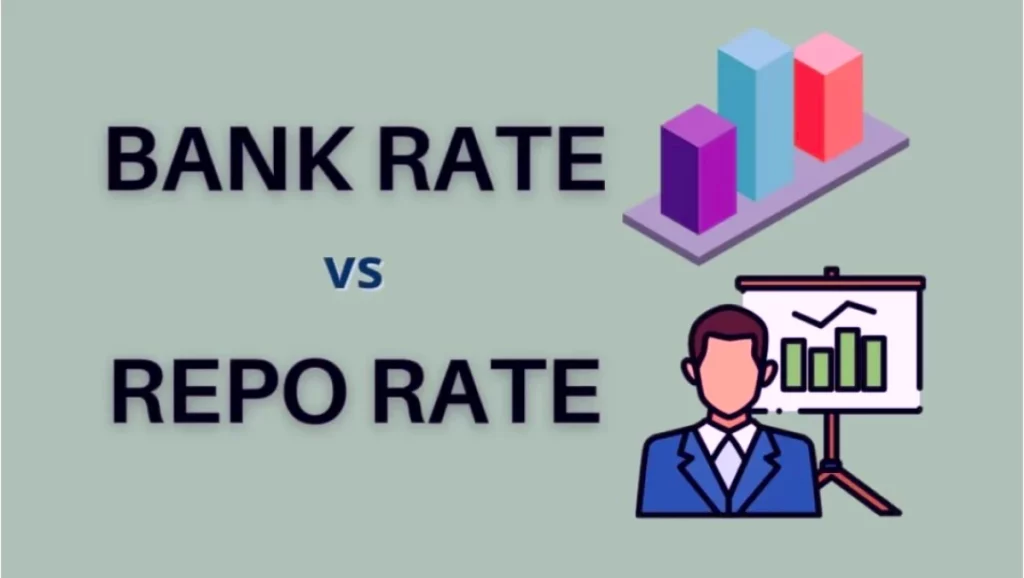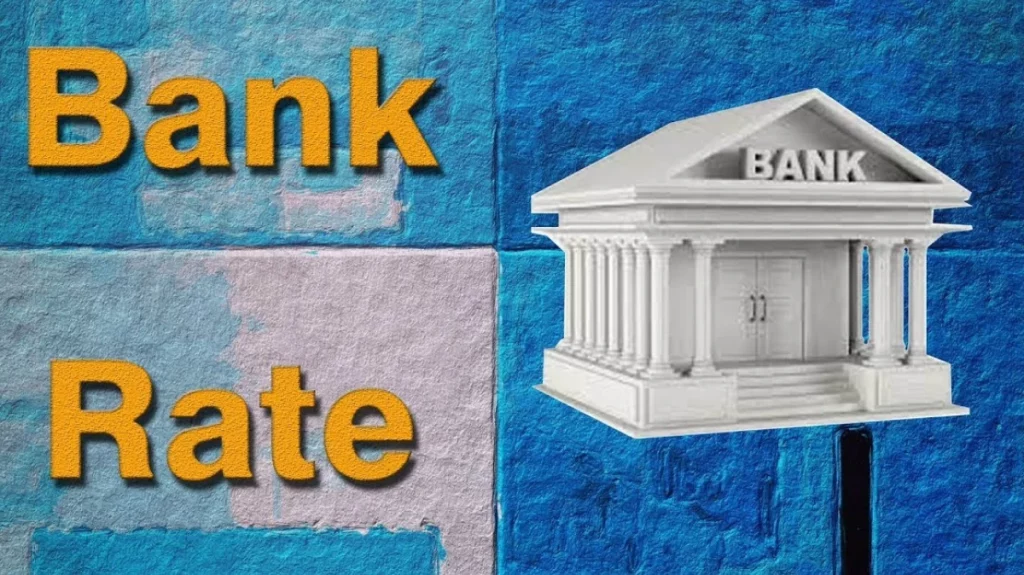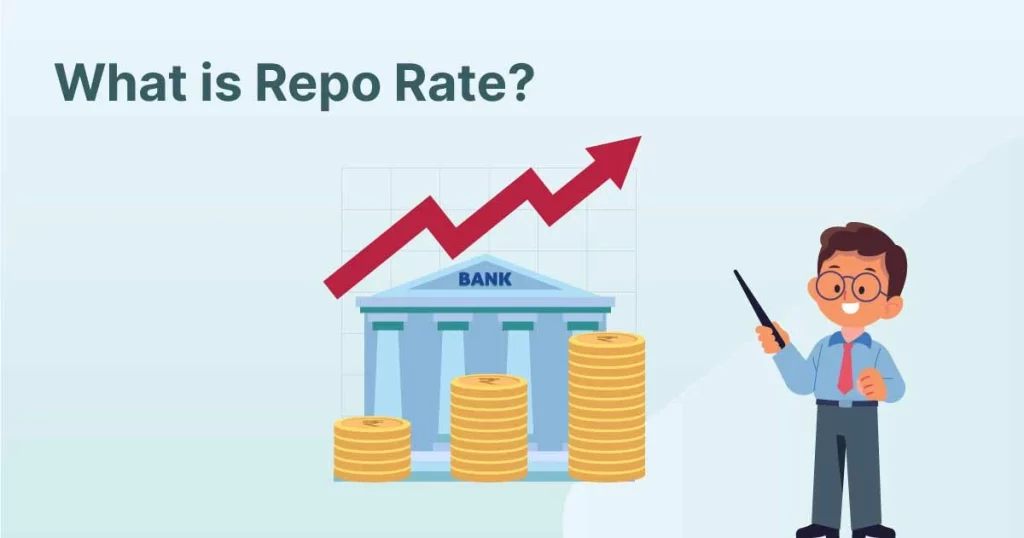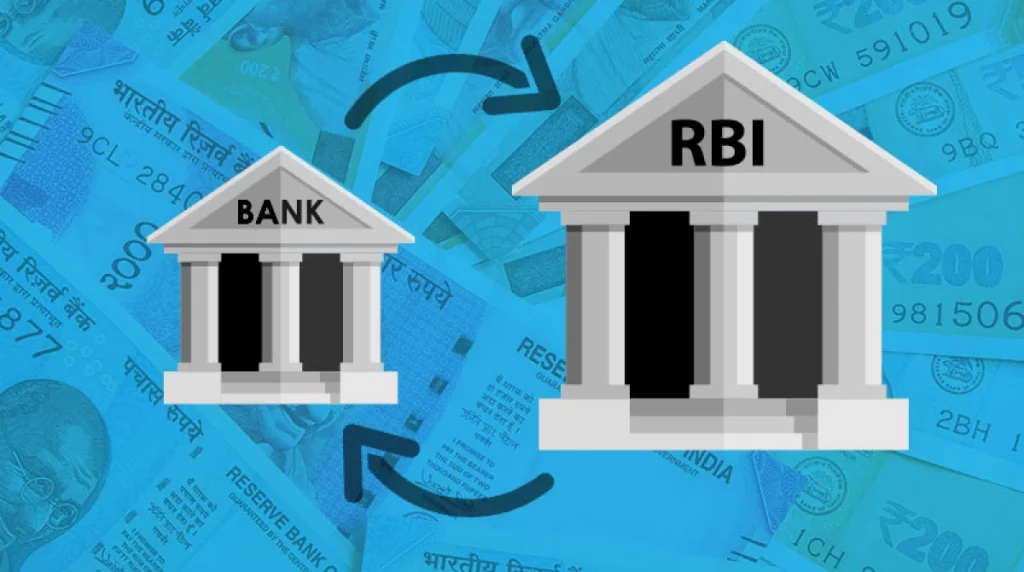Bank rate vs Repo rate, the two terms that have been always mistakenly understood as one. These two terms are often used between the commercial banks and RBI, the central bank of India, for lending and borrowing money.

While both of these rates are regulated and monitored by the Reserve Bank of India (RBI), these rates have different parameters and conditions, based upon which the process of lending/borrowing money is defined.
These two players have been prominent in the base of the financial market that plays a major role in driving economic growth. There are certain interest rates that have been set by RBI, for the further processing of lending or borrowing money between them and the commercial banks.
There are some basic key differences that sets them apart in the financial landscape.
What is Bank Rate?
Bank rate is often referred to as the rate at which the central bank of India, i.e. RBI lends money to commercial banks or other financial institutions, but without giving any security, agreement signed, or involving any collateral.
The commercial banks or the financial institutions lend money to their customers at a higher interest rate than expected and make profits out of it.

Bank rate is often known as the discount rate, as it allows banks to borrow money without paying any security or interest.
- Bank rate is usually higher than repo rate and is a major tool that is used to control liquidity.
- The term bank rate is often mixed and confused with overnight rate, but both are not similar at all. Overnight rates refer to the charge that is being imposed when the banks borrow or lend funds among themselves.
- Bank rates and borrowing/lending costs are related to each other, as when RBI increases the bank rate charge, banks borrowing rates increase in return, due to which it simply reduces the supply of money in the market.
What is Repo Rate?
Another factor of the financial market. Repo rate refers to the rate at which the central bank of India lends money to commercial banks or financial institutions in India during any financial crisis or emergencies.
RBI lends money to commercial banks or financial institutions by one basic condition that there should be some securities sold, bonds, or an agreement should be signed between the bank and RBI.
This selling and buying of securities or bonds between RBI & any bank is also known as the Repurchase Agreement.
- The liquidity in the banking system is often decided based upon the repo rates. That means that if RBI increases the liquidity rate and following that it will reduce the repo rates, encouraging banks to sell their bonds and securities.
- If RBI changes the situation and wants to control liquidity, it will simply increase the interest rate leading to discourage banks from borrowing money easily.

- And when the Repo Rate is increased it means that the central bank will earn a higher interest rate from the commercial banks.
- while an increased Reverse Repo Rate means that the commercial banks earn high interest from the central bank.
- On the contrary, if a commercial bank has excessive funds and securities, they can deposit them to the central bank, and earn ‘Reverse Repo Rate’.
- Overnight loans are available by the RBI at repo rates.
Both of these controls money flow in the market, inflation rate, and regulates the economy.
| Parameter | Bank Rate | Repo Rate |
| Other name | Discount Rate | Repurchase Agreement |
| Aim | Often provided for the long-term monetary needs of the commercial banks. | Available for short term needs of the commercial banks. |
| Rate | Usually higher than repo rates of interest. | Always lower than the bank rates. |
| Security | Bank is not accountable to provide any security. | Here, the bank needs to provide security for the loan. |
| Aftermath | High bank rate results in contracts in the money flow. | Higher repo rate results in increase in borrowing costs. |
| Lower bank rates result in more liquidity and encourages borrowing. | Lower repo rates provide loans at lower interest rates to borrowers. | |
| Tenure | Can be available on overnights or fortnight, and it can be upto 28 days. | Is made available within a short span of time, i.e. one-day tenure. |
(A) Other Names Given
The bank rate is also referred to as “Discount Rate” because the money lending or borrowing process between the central bank i.e. RBI and commercial banks or other financial institutions, does not involve any buying or selling of security or signing any agreement and are usually available at lower interest rates.
Repo rates are known as “Repurchase Agreement” or rate, as here the process involves borrowing money from RBI by selling securities or bonds with an agreement to repurchase them on a certain date at a predetermined price.
(B) Aim
Bank rates are often focussed on fulfilling the long-term monetary needs of the commercial banks or financial institutions. Overtime it can affect the lending rates in the country.
Repo rates are short-term loan rates. These rates address the short-term financial needs of the commercial banks. With time it affects the liquidity rates in the banking system.
(C) Rate
Considering the rate of interest imposed in the bank rate process, the amount borrowed or loaned is higher according to the bank rates. Therefore resulting in higher rate of interest than repo rates.
In contrast, repo rates are lower than bank rates, as it has a specific procedure and involves security deposit with an agreement to repurchase them on a certain date at an already decided amount.

(D) Security
Bank rate process does not involve any exchange or deposit of security, bonds or signing any agreement with the central bank for the borrowed or loaned money. Instead, they are imposed with a higher rate of interest on the money borrowed.
While Repo rates involve a whole different side of the coin. Repo rates involve borrowing or lending money from the central bank to commercial banks or financial institutions only when they provide either the selling or buying of security, bonds or sign an agreement with them.
The loan or borrowed money is only processed after commercial banks provide any of them, the security, bonds or agreement signed to the central bank of India.
(E) Aftermath
If the bank rates are higher than it’ll result in the liquidity in the contracts of the money flow. The reason for that is it increases the costs of funds for commercial banks borrowers and slows down the economic growth. But it is also used when there is a fear of rapid growth and subsequent inflation.
On the other hand, lower bank rates result in more liquidity and encourages borrowing.
While in case of Repo rates, if the rates are higher it’ll result in increase in borrowing costs or will become costlier for the commercial banks to borrow money. Due to that investments will become more costly, and the economy slows. In the case of lower repo rates it’ll provide loans at lower interest rates to borrowers.
With that, banks can easily borrow money by providing some security that can be repurchased at a lower rate of interests.
(F) Tenure
Tenure of bank rates are usually longer than the repo rates. Bank rates are offered and available on overnights or fortnights, and it can last upto 28 days period.
While repo rates tenure are of short-term period. The rate is made available in a short span of time, i.e. within just one-day of tenure. A quick and easy way to get money fast.
Note: Visit the article MRF vs CEAT: Which one is better?
Current rates of Bank and Repo as of 2023
As reported on February 8th, 2023, Bank rates stand at the percentage of 6.75%, while the Repo rates stand at 6.50%. Repo rates have observed an increase by 25 basis points, according to the monetary policy statement issued by the governor of RBI. With this loan interest rates in repo rates will also increase.
